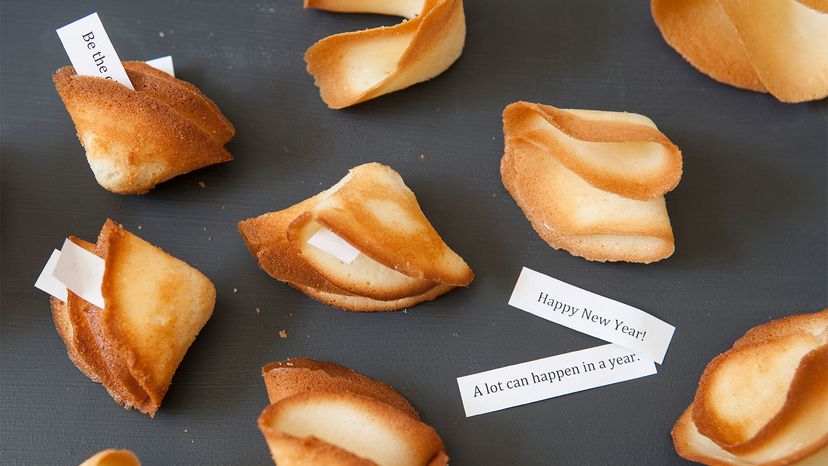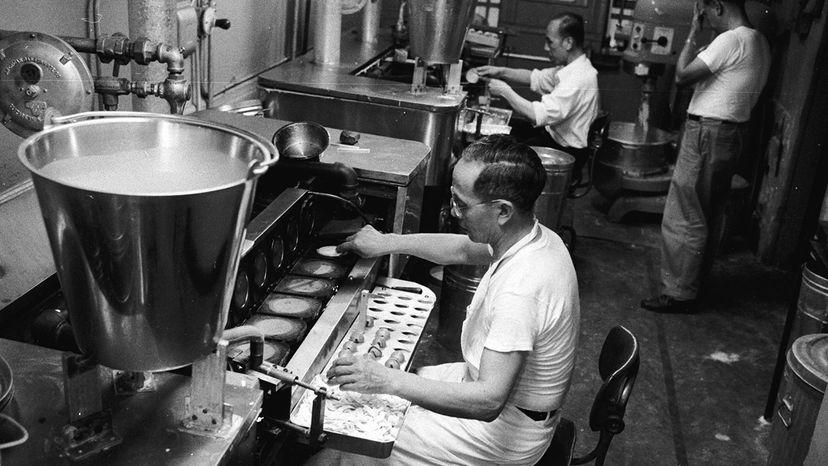So, what goes into fortune cookies aside from the actual fortune? Chef, YouTuber, cookbook author and TV host, and Pailin Chongchitnant lists this super-simple recipe on her site Hot Thai Kitchen.
Ingredients
- 1 egg white, room temp
- 3 ½ Tbsp. caster sugar or superfine sugar
- Pinch of salt
- ¼ tsp vanilla or other flavoring of your choice (almond extract and lemon zest are some good ideas)
- ¼ cup all-purpose flour
- 2 Tbsp. melted butter
Directions
- Whisk egg white until frothy.
- Add sugar and whisk together until the mixture is smooth and glossy.
- Add vanilla and salt; whisk to combine.
- Add flour and whisk just until smooth. Whisk in melted butter.
- Spoon drops of the batter into the shape of a circle onto a flat baking sheet.
- Bake at 350 degrees Fahrenheit (176 degrees Celsius) for 8 to 10 minutes or until the edges of the cookies begin to brown.
Once you pull them out of the oven is when the magic happens.
"What you want is for the browning to happen around the edges and a little bit into the center," says Pailin in an email. By baking the fortune cookies in the oven just long enough to cook the dough, the cookie can be folded with a fortune inside without it breaking.
"Let [your cookie] cool in a muffin tin so it holds its shape," continues Pailin, "and they'll crisp as they cool." Pailin says it's totally fine to put your cookies back into the oven at 275 degrees Fahrenheit (135 degrees Celsius) for eight to 10 minutes if they're too soft.
"I love fortune cookies," adds Pailin. "I love how even adults get a bit of a childlike excitement when opening them to see what's inside. Also, most of the time Chinese restaurants don't have much in ways of dessert options, so for people who feel like a meal isn't complete without something sweet (like me) it's a nice treat."
Now, there are fortune cookie machines like the Kitamura FCM-8006W that suck fortunes into place and use "metal fingers to fold the fortune in half to trap the fortune inside" and can produce up to 8,000 cookies in an hour.




